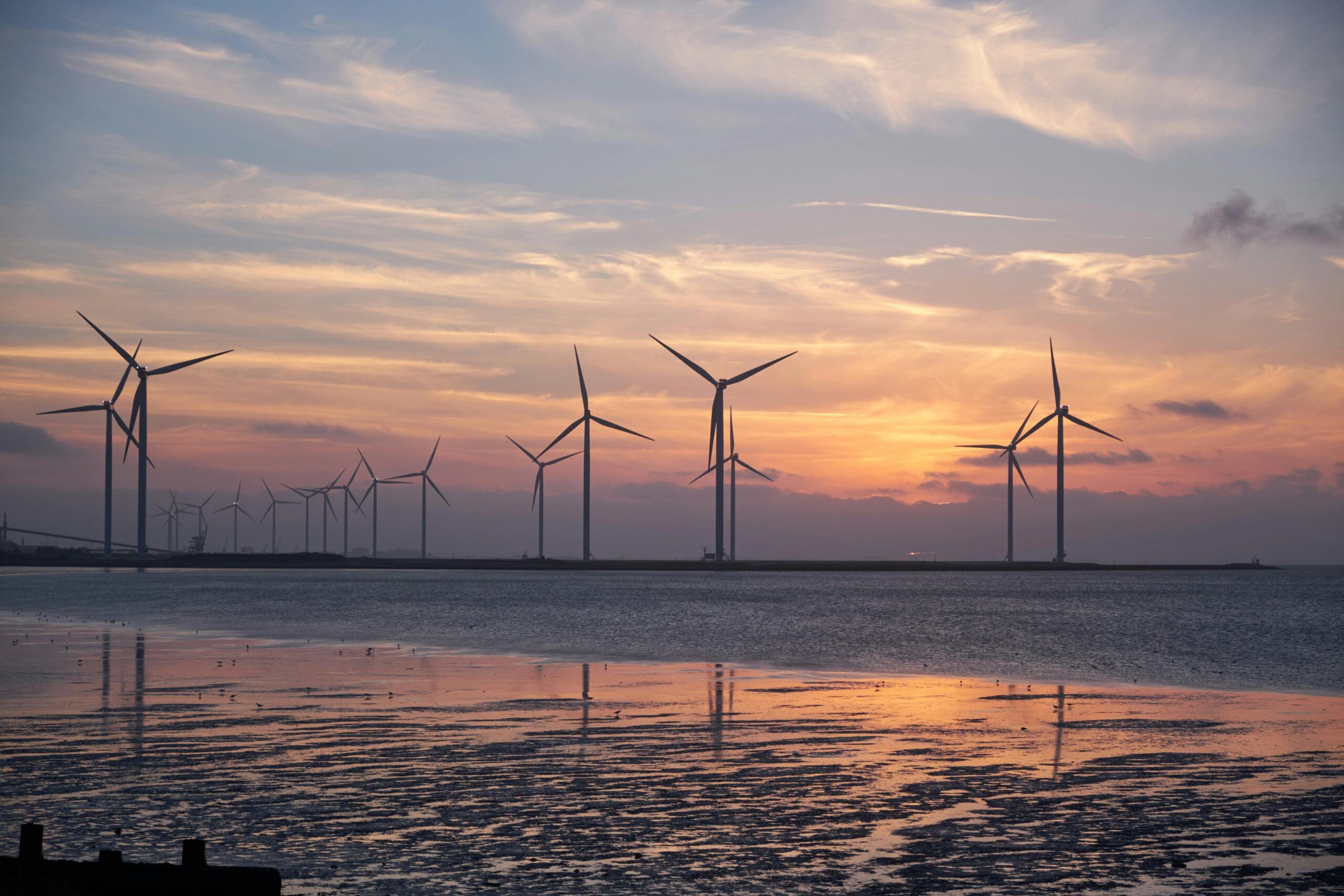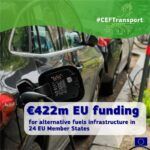In this publication, we attach a press release from the Commission on the National Energy and Climate Plans.
Are the EU and its Member States set to meet the EU’s binding energy and climate targets for 2030?
The Commission assessment of the final National Energy and Climate Plans (NECPs) indicates that, overall, Member States have presented significant improvements from their draft plans following Commission recommendations, raising the ambition. Collectively the EU is closing in on meeting the net greenhouse gas (GHG) emission reduction target of -55% for 2030 compared to 1990 levels, as committed under the European Climate Law. According to Member States’ projections, net emissions will decrease by around 54% by 2030, if the existing policies and measures as well as those set out in the NECPs are implemented alongside EU policies.
Nonetheless, ambition gaps remain across sectors. Emissions from sectors covered by the Effort Sharing Regulation (ESR) — such as transport, buildings, agriculture, small industry and waste — are projected to decrease by around 38% by 2030, compared to 2005 levels. This demonstrates substantial progress from the draft plans, and on the way towards reaching the EU’s 40% target. Five of the 23 assessed plans though project a gap towards the ESR national target, underscoring the need for more action in these Member States.
For the land use, land use change and forestry (LULUCF) sector, there is still a gap of about 45-60 MtCO2eq despite several Member States having stepped up efforts compared to the draft plans. This equals 100-140% of the 2030 target of generating an additional 42 Mt CO₂eq of net removals, as compared to the yearly average in the 2016-2018 reference period. 9 Member States (up from 5 in the draft plans) now project to reach their LULUCF targets, nevertheless Member States still need to step up efforts to stay on track to meet this target. They have several tools available to address this gap, including through the funds of the Common Agricultural Policy and State Aid.
Member States have mostly aligned their renewable energy goals with the EU’s binding target of 42.5% by 2030, as two-thirds of Member States raised their ambition. With only a 1.5% ambition gap, if Member States deliver on their more ambitious projections the EU has the potential to surpass the target. The focus will now be to turn these projections into reality and ensure the EU and Member States deliver on their commitments.
On energy efficiency, the final plans show progress equivalent to an overall 8.1% reduction in final consumption, but a gap of 31.1 Mtoe remains. This calls for more decisive action to reduce energy demand to reach the EU target of 11.7%. Member States contributions are in many cases more ambitious than the national projections showing commitment to meet the 2030 target. The final plans also show clear improvement with an additional contribution of over 20 Mtoe compared to the draft plans.
What are other key elements of the EU-wide NECPs assessment?
The Commission assessment of the final NECPs comes at a time when the EU is focused on delivering a stronger, sustainable and secured economy that works for people and businesses, ensuring social fairness, competitiveness and prosperity.
The assessment covers all the dimensions of the Energy Union: decarbonisation (including adaptation and renewable energy), energy efficiency, energy security and internal energy markets as well as research, innovation and competitiveness. It also addresses important horizontal issues such as the just transition, investment needs and strategies to attract the necessary financial resources.
The assessment shows significant progress towards our 2030 climate and energy objectives compared to the draft plans. This demonstrates the value of the iterative and cooperative process between the Commission and the EU Member States. This progress puts the EU on solid footing supporting the 2050 climate neutrality objective and broader framework, linking energy autonomy, competitiveness and reduced reliance on fossil fuels.
The final NECPs show strengthened energy security through reduced dependence on gas and diversification of energy supply sources. However, this shift requires more specific plans and significant infrastructure upgrades to support the transition. This includes adapting systems to cope with increasingly variable electricity production and addressing evolving threats such as climate change and cybersecurity. The transition to a greener, more resilient energy system, requires increasing the share of home-grown renewables – which requires investments in infrastructure.
Regarding internal energy market, there are big discrepancies between Member States and how they are interconnected. Member States have taken steps to promote greater market flexibility, support renewables penetration, and stabilising markets. Additional measures are needed to enhance cross-border interconnections, deepen market integration and remove market barriers blocking service providers.
Industrial competitiveness, clean technologies and innovation are given a stronger focus and Member States demonstrated clear drive to accelerate the clean energy transition in the final plans. These reflect growing attention to the resilience of supply chains and the promotion of innovation and skills. Despite this progress, many plans lack sufficiently specific or actionable targets in these areas.
There are considerable improvements to the investment estimates and roughly half of the final plans recognise the importance of phasing out fossil fuel subsidies, but few provide a clear overview of such subsidies, or a timeline with concrete measures for phasing them out.
The need for a fair transition for all, energy poverty and required skills are addressed in the final plans. Nonetheless, an in-depth analysis of the impacts of the EU Emission Trading System for fuel combustion in buildings, road transport and additional sectors (ETS2), concrete mitigation measures and information towards the Social Climate Plans are lacking to guarantee social fairness and support the most vulnerable. These plans are expected to be submitted by the Member States by June, outlining how they will protect vulnerable households and communities during the transition with funding from the Social Climate Fund.
Despite the climate risks in Europe, adaptation to climate change is inconsistently addressed throughout the final plans, with only some Member States fully integrating measures to enhance climate resilience and preparedness.
The Commission assessment also highlights key areas where greater achievements in emissions reductions and energy savings can be harnessed thanks to available public and private funding, such as in cleaner transport investments and building renovations.
The decarbonisation of transport systems, which many Member States are positively working on through initiatives highlighted in the NECPs, includes electrified public buses, upgraded rail networks and cycling infrastructure. The decarbonisation of the building sector in the final Plans includes the phase-out of fossil fuels in heating and related subsidies as well as deep renovations of worst-performing buildings, for instance through initiatives phasing-out incentives for fossil fuel boilers and measures to improve indoor environmental quality in buildings. National Building Renovation Plans to be submitted in draft by end of 2025 will provide higher ambition.
Overall, transitioning to renewable energy and clean infrastructure can create thousands of jobs while reducing our dependence on fossil fuels imports.
Are the EU and its Member States on track to their climate neutrality goal by 2050 and to reach its Paris Agreement commitments?
In its 2024 Climate Action Progress Report, the Commission concluded that while GHG emissions are declining and action is tangible, implementation must intensify now that the 2030 policy framework is in place to stay on track to achieve climate neutrality by 2050. According to the latest emissions data, by 2023 EU net GHG emissions had fallen 37% from 1990 levels, while GDP grew 68% – decoupling emissions from economic growth.
Today’s Commission assessment shows projected emissions are well on track towards the -55% target and our international climate commitments for 2030. Although further action is needed to close the sectorial gaps, the final NECPs show increased ambition from the EU Member States.
Further work remains to towards EU’s long-term goal of becoming climate-neutral by 2050 and meeting the Paris agreement objectives. But today’s results confirm the EU’s solid policy foundation towards that common goal. Setting a clear 2040 climate target now will be key to steer actions and investments post-2030. This will provide further predictability for investments and strengthen the business case for the clean energy transition presented in the plans.
How are the final Plans ensuring the EU’s competitiveness and investments for the transition?
The final plans reflect a reinforced focus on enhancing the EU’s competitiveness and supply chain resilience. Compared to the drafts, they include more concrete measures to support clean technologies and considerably improved investment estimates.
Most Member States outline national strategies and measures for research and innovation, but often lack specific funding targets and pathways to 2030 and beyond.
While many plans support clean tech and energy-intensive industries, they often lack details on scaling manufacturing and securing supply chains. Circular economy strategies are included to reduce dependencies.
The Commission aims to enhance competitiveness though initiatives like the Clean Industrial Deal, encouraging demand for clean products and streamlined permitting to support a resilient and sustainable net-zero transition.
Do the final Plans provide sufficient support for citizens and consumers to ensure a fair transition?
A fair and just transition is essential. Most Member States explain their commitment to the gradual phase-out of solid fossil fuels and discuss the impacts of the transition on employment, skills and training needs. However, the depth of the analysis varies significantly with insufficient mitigation measures.
Member States also address energy poverty and outline income support measures. Several plans include effective strategies to offer support for vulnerable groups in the form of financial assistance, energy bill subsidies, and energy savings programs to help low-income households.
Few plans include actionable input for the Social Climate Plans that are due by 30 June 2025. Member States will need to invest further in analysing the social impacts of the ETS2, identify vulnerable groups, and assess how the policy framework identified in the NECPs will contribute to developing the Social Climate Plans.
Are Member States investing enough in renewable and energy efficiency to reach the 2030 EU targets?
Member States are showing political will by boosting their renewable energy ambitions. Still, a 1.5% ambition gap remains. While steps have been taken to accelerate permit-granting and foster renewable energy projects, urgent action is required to turn projections into concrete results. If Member States deliver their more ambitious projects, the 42.5% target is within reach.
Most Member States have set targets for the share of renewables in the heating and cooling sector in line with legal requirements and many Member States have included a special target for renewable fuels of non-biological origin (RFNBO) for industry. Going forward, Member States should promote Power Purchase Agreements (PPAs) and cooperation mechanisms like the EU renewable energy financing mechanism to meet the targets.
As regards energy efficiency, despite a fall in overall energy consumption since 2021 and greater ambition in the updated plans, notable gaps of 31 Mtoe for final energy consumption (FEC) and 47 Mtoe for primary energy consumption (PEC) persist. The updated plans add up to a cumulative reduction of 8.1%, relative to the EU’s 2030 energy efficiency target of 11.7% (763 Mtoe for FEC and 992.5 Mtoe for PEC). Member States have provided detailed support measures and planned policies to implement energy efficiency targets, but energy savings needs to be better quantified. Further action is needed: Member States should also speed up renovation rates, implement comprehensive national building renovations plans and promote energy efficiency solutions to meet and surpass EU targets.
Are Member States sufficiently prioritising adaptation to climate change and climate resilience?
As underlined European Climate Risk Assessment (EUCRA) and the Communication on managing Climate risks, Europe is heating at twice the global rate with extreme weather events increasing in recent years and temperatures in the rise.
NECPs play a crucial role in adaptation planning, including for energy systems. Despite the mounting climate risks, progress in addressing climate resilience and adaptation is uneven across the final plans.
Few final plans have properly integrated adaptation policies and measures, with very limited additions following Commission recommendations. Quantitative measurements of adaptation needs, and of the impacts and benefits of adaptation policies are often lacking, as well as information on climate vulnerabilities and risks to the Energy Union. Some plans address the consequences of climate change on future water availability and its risks for the energy sector.
Scaling up climate adaptation efforts, improving the assessment of climate risks, and embedding the “resilience by design” principle in all policies and measures is paramount.
The European Climate Adaptation Plan, to be presented in 2026, will support Member States in preparedness and planning and ensuring regular science-based risk assessments.
Will the final updated NECPs lower energy prices?
High energy costs are a significant concern for both households and a competitive industry, with energy poverty affecting more than 46 million Europeans, according to Eurostat latest data. This is why the Commission recently adopted the Action Plan for Affordable Energy, which contains specific measures to reduce energy costs in the EU.
The final updated NECPs will contribute to lowering and stabilising energy costs over time inter alia by accelerating the roll out of clean energy and promoting a more coordinated and integrated European energy market. The plans also explicitly address energy poverty and contain specific sections on the fair transition of European consumers, setting out national ambitions and measures in these areas.
What is the Commission planning to do to ensure the 2030 targets are met?
Compared to 2019 and draft NECPs, the final plans show higher ambition, with contributions on renewable energy and energy efficiency now closely aligned with the agreed 2030 targets.
Reaching those targets is a joint effort and shared responsibility at EU level and by all EU Member States. The Commission will strengthen cooperation with Member States supporting their implementation efforts, in line with the guidance provided in today’s assessment. It will also support streamlining processes and improving access to finance. The Commission has already proposed several actions to support Member States in closing the ambition gaps, including the Action Plan for Affordable Energy and the Clean Industrial Deal, which will lower energy costs and boost competitiveness and decarbonise EU’s industry.
On renewables, if Member States fully deliver on their projections, the limited ambition gap will close. The Commission will streamline legislation, reducing permitting times to accelerate renewable projects and enhance investment frameworks. It will also support the uptake of renewables by accelerating electrification, scaling up power purchase agreement and promoting flexibility solutions. Grid modernisation and expansion will also facilitate the transition.
On energy efficiency, the Commission is exploring how to set up an EU-wide market for energy efficiency, including for energy savings certificates. The Commission will update EU energy labelling and eco-design rules, improve access to capital and facilitate the availability of financial tools through the European energy efficiency financial coalition. In cooperation with the European Investment Bank (EIB) Group, the Commission will also explore ways to set up an EU guarantee scheme aiming to double the energy efficiency services market. Implementing the Clean Industrial Deal and the Affordable Energy Action Plan should trigger more investments into renewables and energy efficiency.
On Effort Sharing and LULUCF, the Commission will keep working with Member States to close the existing gaps, identify and remove any obstacles. It will continue to monitor annual progress towards both targets and will request corrective action plans, where needed. Member States should ensure robust implementation on the ground and work towards mobilising the necessary investments. For the land sector, Member States should adopt stronger carbon removal policies, use funds strategically, and explore market-based tools like carbon farming and certification. For ESR, Member States not on track are encouraged to develop a sound strategy to combine additional measures with available flexibilities. All Member States should swiftly implement ETS2 to ensure cost effective emission reductions from road transport and buildings and accelerate complementary national measures to decarbonise these sectors.
Finally, it is also important to acknowledge that these updated NECPs have only recently been finalised and implementation is in its early stages. That is why delivering those in full and closing gaps is where the focus must be in the next 1-2 years.
Are you still enforcing all missing Member States to deliver their pending NECPs?
Belgium, Estonia and Poland have still not submitted their final plans. The Commission urges these three Member States to do so without delay. Even if the headline ambition levels of these Member States have been included in the Commission assessment, the individual assessment of their plans is still required and mandatory.
This will be completed by the Commission upon their formal submission. Currently, the Commission is carrying out the individual assessment of Slovakia’s final plan, which was submitted on 15 April 2025.
More information: European Commission







Leave a Reply